|
|
Clyde and Helen Wu
Distinguished Lecture Series Speakers
 |
BALABAN, ROBERT Ph.D.
Scientific Director, National Heart, Lung, and Blood Institute
National Institutes of Health
and the 2016 Clyde & Helen Wu Visiting Professor
November 4, 2016- "The Mitochondrial Reticulum of Muscle Cells”
Millions of years ago, a eukaryotic cell swallowed whole the bacterial ancestor of the mitochondrion and put it to work converting nutrients into energy. How the mitochondrion has been domesticated to serve the needs of the eukaryotic cell is the focus of Dr. Balaban’s research. Creating energy is an inherently dangerous process requiring careful monitoring and quick eradication of damaging by products.
Cells therefore have mitochondrial function under tight regulatory control. Since his discovery some years ago that mitochondria in the heart can supply energy at a rate that perfectly matches a range of physiological demands, Dr. Balaban has sought to understand how
mitochondria are regulated to ensure this metabolic homeostasis. Dr. Balaban bases his research on the hypothesis that mitochondria are modulated to
support cellular metabolic homeostasis chronically by altering mitochondrial content,
composition, and cellular location. The acute regulation of energy conversion is via post-translational modifications or metabolite/allosteric interactions with the enzymes. Given the complexity of oxidative phosphorylation, it is clear that the focus must be on regulatory networks and manipulations of functional pathways, not on a few lone proteins. Accordingly, his laboratory takes a systems approach to studying mitochondrial protein composition and distribution in relation to function. He and his colleagues study post-translational modifications of mitochondrial proteins to understand how proteins and enzymes rapidly adjust to maintain metabolic homeostasis under acute changes in energy demand as well as the structure
function of mitochondria at spatial scales from the protein structures to mitochondria topology in intact cells.
|
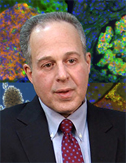 |
KITSIS, RICHARD, M.D.
Professor, Departments of Cell Biology and Medicine,
The Dr. Gerald and Myra Dorros Chair in Cardiovascular Disease
Director, Wilf Family Cardiovascular Research Institute,
Albert Einstein College of Medicine
December 3, 2015- "Serpins, cell death, and diabetes”
Dr. Kitsis work is focused on: (a) understanding mechanistic connections that link cell death programs - in particular, apoptosis and necrosis (PNAS, 2012. 109: 6566-6571; Cell Death Differ, 2014. 21: 634-644); and molecular connections between cell death and other mitochondrial processes. One of these processes, which plays important roles in aging and disease, is mitophagy, the selective elimination of senescent and damaged mitochondria by a specialized form of macroautophagy. Recently, we discovered new roles for cell death molecules as regulators of mitophagy. (b) A second major focus in the lab employs chemical and structural approaches in the identification/design of small molecules to reduce cardiomyocyte death. We have used both unbiased screening (Probe Reports from the NIH Molecular Libraries Program, 2013; PMID: 24404634) and candidate approaches to develop prototypes of what we hope will become small molecule drugs to reduce heart damage during myocardial infarction.
|
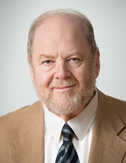 |
ROTHMAN, JAMES, Ph.D.
September 22, 2014 - "Regulation of Neurotransmitter Release”
Professor Rothman is renowned for discovering the molecular machinery responsible for transfer of materials among compartments within cells. In so doing, Rothman provided a unified conceptual framework for understanding such diverse and important processes as the release of insulin into the blood, communication between nerve cells in the brain, and the entry of viruses to infect cells. Numerous kinds of tiny membrane-enveloped vesicles ferry packets of enclosed cargo. Each type of vesicle must somehow deliver its specialized cargo to the correct destination among the maze of distinct compartments that comprise the cytoplasm of a complex animal cell. The delivery process, termed membrane fusion, is fundamental for physiology and medicine, as pathology in this process can cause metabolic, neuropsychiatric and other diseases.
|
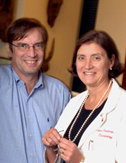 |
SEIDMAN, CHRISTINE AND JONATHAN, M.D.
JULY 11, 2012
Christine Seidman is interested in dominant-acting mutations in sarcomere protein genes that cause hypertrophic cardiomyopathy in humans. The Seidman lab has made a murine model of this disease and demonstrated that these mutations lead to altered Ca2+ concentrations in myocytes. Ca2+ channel blockers reduce the hypertrophic response to sarcomere protein gene mutations in mice.
Jonathan Seidman is interested in dominant-acting mutations in sarcomere protein genes that cause hypertrophic cardiomyopathy in humans. The Seidman lab has made a murine model of this disease and demonstrated that these mutations lead to altered Ca2+ concentrations in myocytes. Ca2+ channel blockers reduce the hypertrophic response to sarcomere protein gene mutations in mice.
|
 |
GIBBONS, GARY H., M.D.
DECEMBER 19, 2011
"Cardivascular Health Disparities: Discovering Genomic and Environmental Determinants”
Membrane fusion is a fundamental biological process for organelle formation, nutrient uptake, and the secretion of hormones and neurotransmitters.
It is central to vesicular transport, storage, and release in many areas of endocrine and exocrine physiology, and imbalances in these processes give rise to important diseases, such as diabetes.
We employ diverse biophysical, biochemical, and cell biological approaches to characterize the fundamental participants in intracellular transport processes.
|
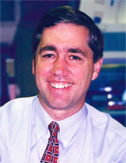 |
LIFTON, RICHARD P., M.D.
DECEMBER 13, 2010 - "Insights into the Physiolgy of Complex Systems from Human Genetics”
Richard Lifton is Chairman of the Department of Genetics, Sterling Professor of Genetics and Internal Medicine, Director of the Yale Center for Human Genetics and Genomics, and Investigator of the Howard Hughes Medical Institute at Yale University School of Medicine. He received his BA from Dartmouth, MD and PhD degrees from Stanford, and completed clinical training in Medicine at Harvard prior to moving to Yale in 1993.
Dr. Lifton's laboratory has used human genetics and genomics to identify causes of heart, kidney, and bone disease. By investigating thousands of families from around the world, his group has identified more than 25 human disease genes. These include key genes and pathways that are critical to the risk of hypertension, stroke, heart attack, and osteoporosis. These studies have provided new diagnostic and therapeutic approaches to these diseases, which affect more than 1 billion people world-wide.
|
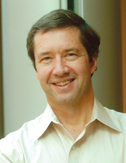 |
COUGHLIN, SHAUN, M.D.
DECEMBER 7, 2009 - "“Protease-activated receptors and other GPCRs in Vascular Biology & Embryonic”
Dr. Coughlin's cardiovascular research discovered how thrombin, an enzyme that causes blood to clot, works on the cellular level. In the process, he identified a new family of receptors that are broadly involved in a number of biological processes and have important implications for the development of novel treatments for diseases and pathologic events in which thrombosis plays an important role, including heart attacks and many strokes. His discoveries led to a greater understanding of platelets and clot formation. Dr. Coughlin is the recipient of numerous honors and awards. In 2004 he won the Bristol Myers Squibb Cardiovascular Research Award and he was elected to the National Academy of Science
|
 |
HOBBS, HELEN, M.D.
DECEMBER 1, 2008 - "Genetic Protection from Disease of Plenty”
The following excerpt from the HHMI web site described Professor Hobbs’ research and career development.
“Helen Hobbs has discovered new genes and variations within genes that account for individual differences in blood levels of low-density lipoprotein, the "bad" cholesterol. High LDL cholesterol is a major risk factor for heart disease and heart attack because it contributes to the buildup of plaque that can clog artery walls. By identifying the genes that influence cholesterol levels and exploring their function, Hobbs's studies are laying the groundwork for the development of new cholesterol-lowering drugs.
|
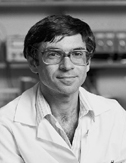 |
LEFKOWITZ, ROBERT J, M.D.
DECEMBER 10, 2007 - "A Brief History of Transmembrane Receptors: New Approaches to Drug Therapy”
Our research program is concerned with the molecular properties and regulatory mechanisms that control the function of plasma membrane receptors for hormones and drugs under normal and pathological circumstances. Receptors are the cellular macromolecules with which biologically active substances (e.g., hormones, drugs, neurotransmitters, growth factors, viruses, lipoproteins) initially interact. Some years ago we isolated the genes for all of the known adrenergic receptors, as well as a number of closely related receptors, and determined their complete amino acid sequences.
|
|
|
